What is Upcycling?
The term Upcycling is a concept that has been gaining traction in recent years, especially within the realm of furniture and interior design. It focuses on taking waste materials and transforming them into new, innovative products, thereby giving new life to items that might otherwise end up in a landfill. The history of upcycling can be traced back to the early 1990s, but it has since gained significant momentum as a response to the growing concern for environmental sustainability.
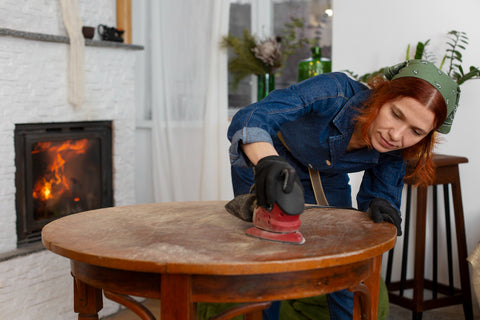
The process of renovation involves reimagining the potential of discarded raw materials and giving them a new purpose. This could mean repurposing old furniture, converting industrial waste into decorative pieces, or creating new products out of recycled materials. The aim is to reduce the amount of waste generated while also creating unique and sustainable designs that contribute to a more eco-friendly approach to interior design.
It can encompass a wide range of materials and products, from wooden pallets and old doors to discarded metal and plastic items. By using these waste materials in new and creative ways, it not only reduces waste and landfill usage, but also promotes environmental awareness and sustainable design practices.
The goal of upcycling has become synonymous with environmental consciousness and the desire to make a positive impact on the planet using limited resources more effectively. By embracing the principles of revamping, individuals and businesses can contribute to a more sustainable future while also adding a unique and creative touch to their furniture and interiors.

What is the Difference Between Reuse and Upcycle?
Reusing means giving an old item a new purpose instead of throwing it away, while upcycling goes a step further by not only reusing objects or repurposing materials but transforming them to craft a product with enhanced quality or value compared to its original form.
The History Of Recycling
Upcycling is a growing trend that involves taking old or used items and transforming them into something new and valuable. From furniture and clothing to art and decor, reworking has become a popular way to reduce waste and create unique, one-of-a-kind items.
As human civilization evolved, so did the concept of recycling. Its history stretches back to early human history, at first the focus was primarily on practicality and necessity and has since evolved into a global movement that promotes sustainability and creativity.
While not necessarily considered "upcycled" initially, these practices laid the groundwork for the modern concept of repurposing and reusing.
Early Humans:

As human civilisations developed, the practices of reusing unwanted products continued to evolve. Reusing and repurposing items became a practical and necessary way of life, as resources were often scarce and valuable. In many cultures, the value of items was based on their ability to be repurposed and used in various ways. The idea of throwing something away simply because it was no longer needed was foreign to these early human societies.
19th and 20th century repurposing:
In the 19th century, the practice of reusing was a common practice in the world of furniture and interiors.
This period saw the reuse and repurposing of raw materials to create new and innovative pieces of furniture.
Notable figures such as William Morris, a prominent figure in the Arts and Crafts Movement, were known for reusing materials. Morris and his contemporaries focused on creating furniture and interiors that were both aesthetically pleasing and sustainable, often using reclaimed wood and other materials in their designs.
40's: MAKE DO AND MEND
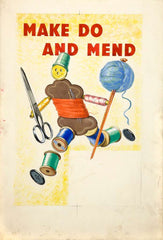
During World War II, the British embraced revamping as a way to cope with clothing
rationing and support the war effort. With resources in short supply, the "Make Do and Mend" campaign was introduced to encourage citizens to make their clothing supplies last longer. This has carried forward into the sustainable fashion movement.
This resourcefulness extended beyond clothing and into furniture and interiors as well. Many households found ways to repurpose and repair furniture, giving old pieces a new lease on life. The practice of reworking not only helped cope with the shortage of supplies during the war, but also contributed to the war effort by conserving resources.
Modern Day and Sustainable Design
In more recent years, the upcycling movement has become a mainstream trend, with designers and DIY enthusiasts taking the concept to new heights in the 20th century and beyond.
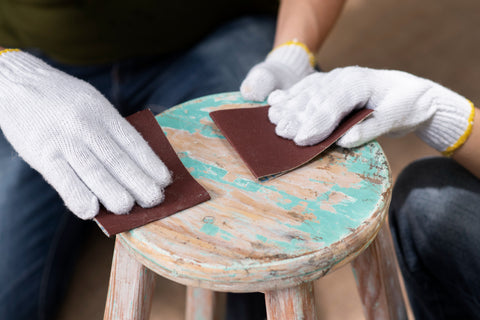
Old furniture, such as wooden pallets or discarded cabinets and unwanted products, are transformed into chic, one-of-a-kind pieces that add character and sustainability to a home. This shift towards recycled products has been driven by a growing awareness of the environmental impact of mass production and consumerism, as well as a desire for more unique and personalised interiors.
With the rise of social media and online platforms, simple revamps and hacks have become more accessible and widespread than ever before. DIY tutorials and design inspiration can be found with a few clicks, making it easier for people to get involved and make a positive impact on the environment in their everyday life. From small-scale upcycled products to large-scale design revamps, the possibilities for incorporating upcycled items into interiors are endless.
Interiors revamping today

In the world of furniture and interiors, reuse has become a popular and trendy way to promote sustainable practices and environmental consciousness. This trend can be largely attributed to the mainstream adoption of repurposing, which was influenced by the publication of “Cradle to Cradle: Remaking the Way We Make Things” in 2002.
The book, written by William McDonough and Michael Braungart, introduced the concept of 21st century upcycling as a way to repurpose and reuse waste materials in a way that minimizes waste and promotes sustainability. The authors advocated for a new approach to design and production that takes into consideration the ecological impact of our
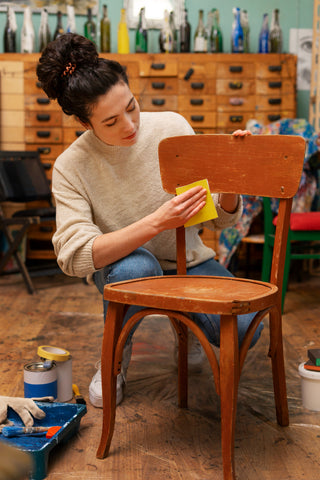
consumption habits.
Following the publication of “Cradle to Cradle,” many individuals and companies began to embrace the repurposing their original products in their interior design and furniture production. This shift in mindset has had a significant impact on the way we approach sustainability in the furniture and interiors industry with a longer life cycle of a product becoming part of the design process.
Today, it has become a popular and stylish way to create unique and environmentally friendly pieces of furniture and home decor. From reclaimed wood tables to repurposed vintage chairs, upcycled items are in high demand among consumers who are looking for sustainable and eco-friendly options for their homes.
Not only does the recycling process help reduce waste and promote sustainability, but it also adds a unique and individual touch to interior spaces and, during a major recession a cheaper way to improve your home.
The finished products often have a story to tell, whether it’s the history of the materials used or the creativity of the designer who repurposed them.
Where can I find the best ideas for upcycled projects?
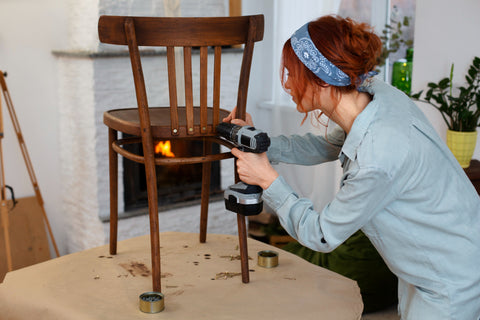
Whether it's giving an old dresser a fresh coat of paint or turning an old window into a unique coffee table, recycled objects offer a fantastic way to add a personal touch to your home while also being kind to the environment.
But where can you find the best ideas for upcycled furniture? The good news is that inspiration is all around you, and with the help of online platforms like Pinterest and YouTube showing you the design process and finished product, you can tap into your creativity and discover a wealth of recycled materials ideas and finished product tutorials.
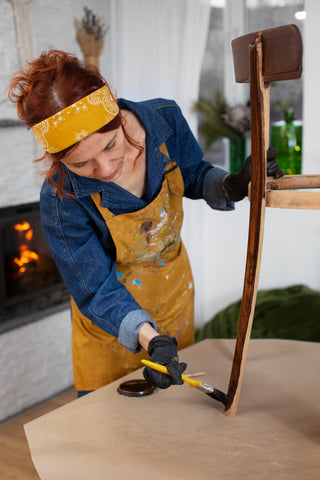
Pinterest is a treasure trove of revamping inspiration, with countless boards dedicated to DIY projects and furniture transformations. Whether it's shabby chic furniture or clever ways to repurpose original products and disused objects, you'll find no shortage of ideas to spark your creativity. Tiktok is also great for transformations inspiration, giving you a quick overview of the process to spark your creativity.
YouTube is another fantastic design process resource, with a plethora of tutorials and how-to videos that can guide you through the process of transforming disused objects into something new and exciting. From simple DIY projects for beginners to more advanced techniques, there's something for everyone on YouTube.
Not only will this help you find fresh ideas and techniques, but it will also connect you with a community of like-minded individuals who share your passion for recycled objects..
From an economic standpoint, recycled materials can also offer substantial savings. By reworking old furniture and interiors, you can create unique, one-of-a-kind pieces for your home at a fraction of the cost of buying new items. This not only allows you to express your personal style and individuality, but it also helps you to save money and reduce your environmental impact in the process.
How to make old furniture look expensive?
If you want to give your old furniture a facelift without breaking the bank, then upcycling is the way to go. It's amazing what a fresh coat of paint, new handles, or a bit of decoupage can do to transform a tired piece into something stylish and expensive-looking.
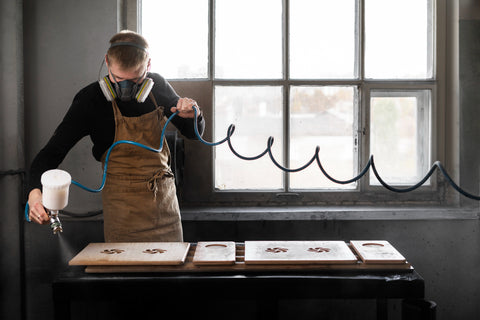
One of the easiest ways to upcycle furniture is by giving it a new lease of life with a fresh coat of paint. Whether it's an old wooden coffee table, a tired dresser, or a worn-out chair, a lick of paint can completely change the look of a piece. Consider opting for a high-gloss finish for a luxurious touch, or go for a matte or chalk paint for a more rustic feel.
Another simple and effective upcycling hack is to update the handles or knobs on your furniture. Swapping out old, worn handles for new, stylish ones can instantly elevate the look of a piece. Wooden drawer knobs or handles can add a touch of sophistication and make your furniture look more expensive.
How can I update my old kitchen cabinets without replacing them?
If you're looking to update your old kitchen cabinets without the hassle and cost of replacing them, there are plenty of ways to give them a fresh new look. From sanding and repainting to adding new hardware and trim, you can transform your cabinets into something stylish and modern without breaking the bank.

Start by sanding down the old paint or finish on your cabinets to create a smooth surface for repainting. Choose a colour that complements your kitchen's décor and give your cabinets a fresh coat of paint to instantly rejuvenate the space. Upgrading the hardware on your cabinets can also make a big impact - consider swapping out old hardware for stylish new wooden handles for a modern and sophisticated look.
Adding crown moulding or trim to your cabinets can also transform their appearance, giving them an elegant and upscale feel. If your cabinets are wooden, considering applying a new finish or stain to bring out their natural beauty and update the overall look of your kitchen.
By following these simple steps, you can update your old kitchen cabinets without the need for a full replacement, giving your kitchen a brand new look on a budget.

